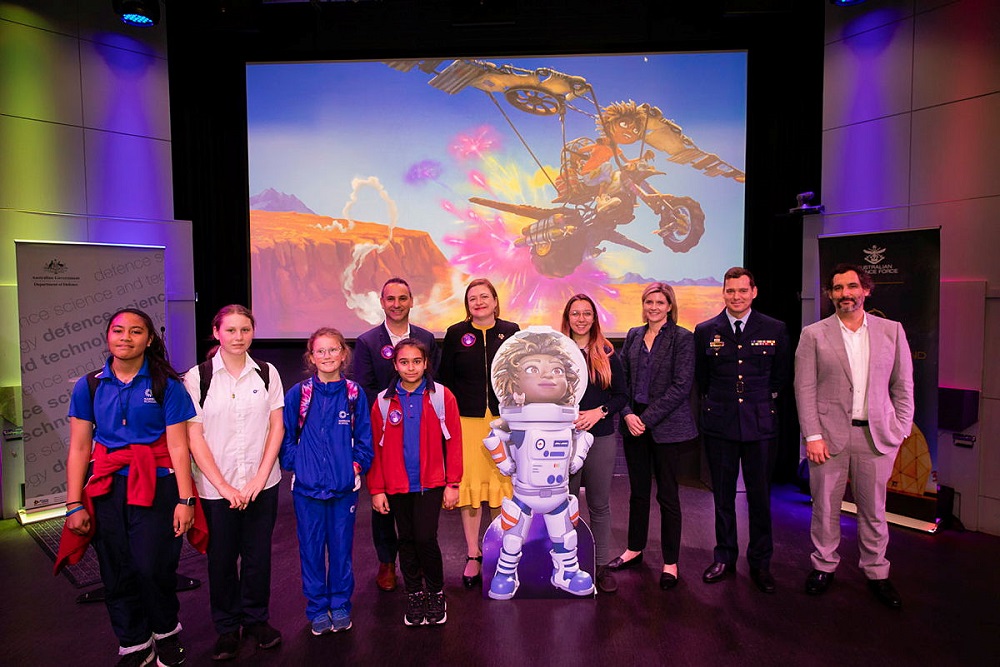
Opening up opportunities for Australia’s women in high-tech areas is about much more than fairness. It has become a strategic imperative. This is crucial as Australia faces its most complex array of national security challenges occurring at a rate unseen since the World War 2.
The Defence Strategic Review stressed that the demand for Defence’s capability innovation systems has never been higher. In response, the Government directed that Defence must have a national science and technology system that enables the development of disruptive military capabilities, including harnessing advanced and emerging technologies to provide asymmetric advantage for the ADF.
Our senior leaders recognise the challenge and the task ahead and are increasingly thinking differently about why women bring more than just a rebalance to the workplace, they bring new ways of thinking about old problems.
Defence must remain committed to building a capable and diverse workforce that draws from the community we serve. Harnessing diversity and inclusion in Defence ensures we have the right capability required to achieve our mission and deliver a more capable, agile joint fighting force.
International Women’s Day is an amazing opportunity to reflect on leadership and the incredible contribution of women in Defence. Every day presents new opportunities, new experiences and new possibilities around who we are, how we matter and the significant impact we have in decision making, our commitment to the task and bringing new perspectives to Defence’s vital mission.
As I’ve said before, it takes courage for women to enter and persist in the scientific workforce when they encounter gendered obstacles in addition to the usual challenges associated with doing difficult things well.
The confidence gap is real, especially amongst women in technical fields.
The STEM gender equity monitor reveals that in 2023, girls made up the majority of students in many year 12 STEM subjects; and the number of women enrolling in university STEM courses increased by 31% between 2015 and 2021. But the data also shows that girls’ confidence in STEM subjects is generally lower than boys and falls as they get older, with only 15% of STEM-qualified jobs held by women.
It takes courage for women to speak out when they’re expected to shoulder the brunt of changing scientific workplaces so that the girls and women that follow them have better odds of thriving.
All the while many women and girls in science need every ounce of that courage for themselves to overcome the lingering confidence gap many of us carry through life.
And I’m glad that these women persist, because it’s that courage that allows them to contribute to creating the knowledge and impact that shapes our world.
We need to tap women on the shoulder and let them know, ‘it’s time to step up, you’re ready for this opportunity.’
Defence has maintained a commitment to increasing opportunities for women, especially in technical roles. For me, being the first woman to accept the role of Chief Defence Scientist, proved Defence’s commitment to welcoming women into senior roles.’
There’s been a great deal of discussion about how Australia must find the skills to design, build and crew nuclear-powered submarines. That adds to the national imperative to encourage many more girls to study STEM subjects, and to join the workforce.
Then we must encourage them to stay and to advance in their professions.
Along with tackling the complexities of the submarine program, women are making a vital contribution to the development of cutting-edge technology under AUKUS Pillar II.
By setting targets for women’s participation in our STEM entry programs we draw more fully on our nation’s talent pool, allowing Defence science to deliver greater benefit to the ADF.
Continuing to ensure the success of women requires strong leadership and a commitment to change, so I’m incredibly proud of these bold targets.
Defence’s transformation agenda includes becoming an exemplar in attracting, training, retaining and providing career opportunities for women. These measures demonstrate in practical terms how we are taking steps to achieve this.
Defence is committed to increasing opportunities for women—especially in technical roles. For me, being the first woman to accept the role of Chief Defence Scientist, proved Defence’s commitment to welcoming women into senior roles.’
Defence is taking decisive steps to encourage women in STEM, including increasing our targets to 50% for women’s participation in the Defence STEM Cadetship Program, the Research and Innovation Pathway within the Defence Graduate Program, and the NAVIGATE | DST (defence.gov.au) program, which brings experienced STEM professionals into DSTG from industry and academia.
Defence needs to be adaptive. Key to this is our people, who are at the heart of enterprise capability, with our culture underpinning how we move forward together.
I’m a member of the Champions of Change Coalition, which advocates for the importance of diversity and inclusion.
This group of public and private sector leaders works together to focus on gender inequality in their respective organisations and communities. The Coalition is about increasing female representation and developing the conditions and cultures that enable them to thrive.
It’s a personal mission to try and teach young women and girls about their talent and ability to contribute, and to have the courage and determination to achieve all they aspire to do—while continuing to support and encourage male allyship in the workplace.
This International Women’s Day, invest in women and celebrate the potential of the women around you to build new solutions in a rapidly evolving strategic security environment.

